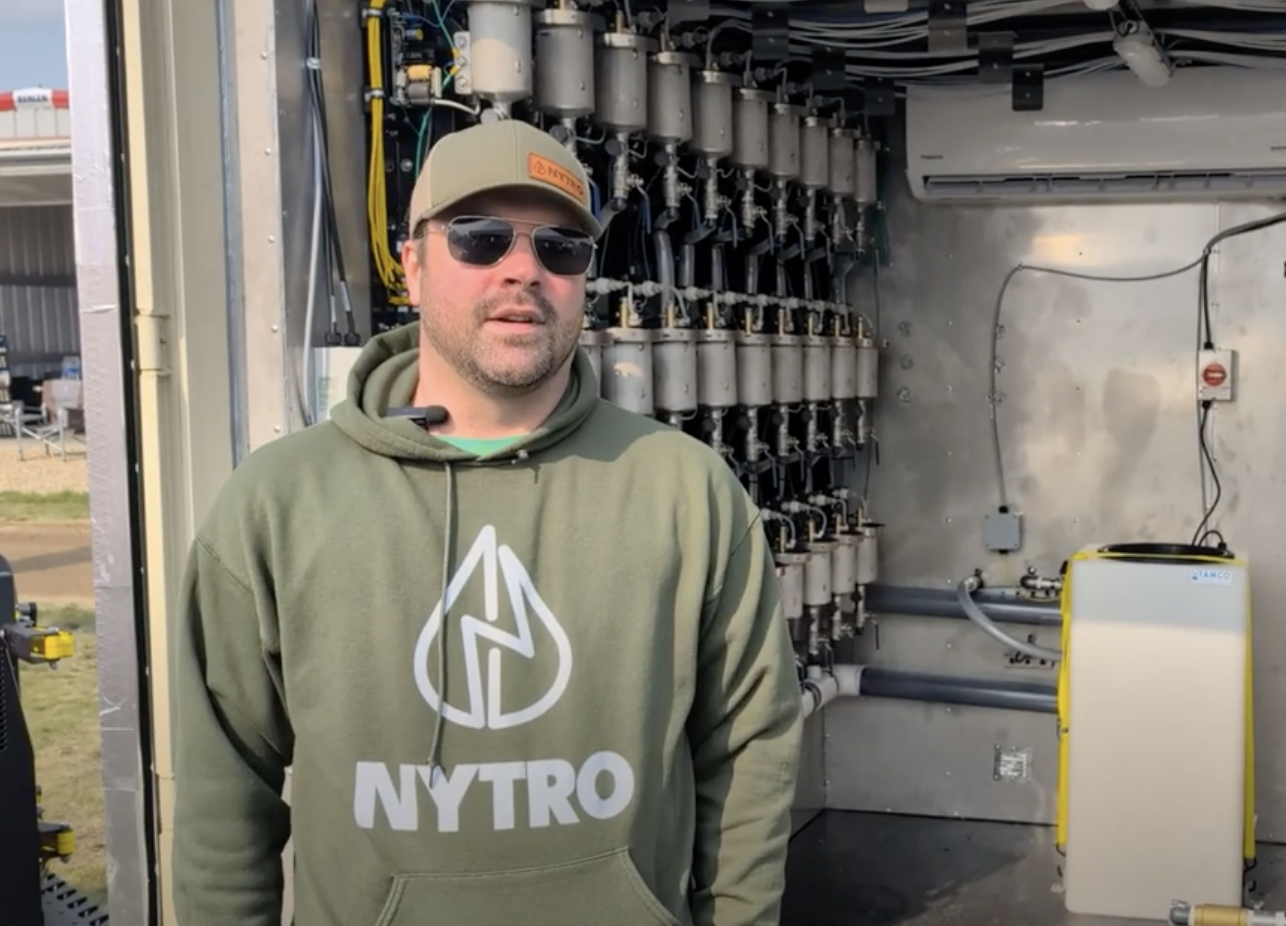BRANDON – Prairie farmers need a new method of soil testing to come up with fertilizer recommendations, according to Indian Head farmer Jim Halford.
Speaking to the Manitoba-North Dakota zero-till workshop, the veteran zero tiller said mature zero-till fields are so dramatically different from conventionally seeded and young zero-till fields that fertilizer recommendations based on current soil tests can be wrong.
Halford has fields that have been under zero till for 25 years. Two years ago, he bought adjacent land that had been conventionally farmed for more than a century.
Read Also

VIDEO: Green Lightning and Nytro Ag win sustainability innovation award
Nytro Ag Corp and Green Lightning recieved an innovation award at Ag in Motion 2025 for the Green Lightning Nitrogen Machine, which converts atmospheric nitrogen into a plant-usable form.
The new fields give Halford a basis for comparison. He said the soil test system used in Canada may work on conventional fields and new zero-till fields, but are not relevant to fields that have been under zero-till for more than five years.
“On our older zero-till fields, we never put more than 50 or 60 pounds of nitrogen on wheat anymore,” he said. “If we fertilize up to what the soil test recommendations say, and then we get good rainfall, we get into a lot of lodging. And, because of that extra nitrogen, the crop just will not mature for us.”
The wheat is still a little green in late August. Frost becomes a danger.
“Mineralization of nitrogen is very different in land that’s been in zero till. Our current soil test system only tells you what you have at that particular point in time. It doesn’t tell you anything about the nitrogen that will be released through the growing season.”
He said Agriculture Canada performed hot KCL tests on his zero-till soils that showed an extra 50 to 60 lb. of nitrogen was released gradually through the growing season.
Halford said he started to recognize the mineralization effect at 12 or 13 years into zero-till. It was probably happening long before that, but nobody had been looking for it.
In standard soil tests, nitrogen levels were similar in zero-till fields and in neighbouring conventional fields. But Ag Canada lab incubation tests found more than twice as much nitrogen released from the zero-till soil.
“It’s important to understand that this is nitrogen that is freely available to your crop.”
Halford said the time to cut back on nitrogen fertilizer varies from farm to farm. Five years might be an arbitrary starting point. The standard soil test doesn’t give information needed to make the correct decision.
Zero-till farmer John Heard agrees. He said the research used as a basis for fertilizer recommendations is 20-40 years old.
“Cropping systems were different when these recommendations were developed. There was a lot of summer fallow. There was very little use of pulse crops or manure, and soils were all tilled conventionally.”
Four new tests are being developed to be more relevant to zero-till conditions. The tests measure the relative amount of mineralizable nitrogen that will be available to a crop during the growing season.
While lower fertilizer costs are critical at the farm level, Halford said the Kyoto Agreement on greenhouse gases and the environmental impact must also be considered.
“If a farmer can apply 60 lb. per acre of commercial nitrogen instead of 90 lb., and still get the same yield, then we can say there’s a significant environmental impact. That’s one-third less nitrogen throughout the entire system.
“It means 30 lb. of commercial nitrogen per seeded acre that does not have to be manufactured, transported to the region, stored, transported again to the farm, maybe stored again, and then brought out to the field for application.”
Tests done in 1998 on Halford’s farm show that knolls of native prairie grass on the farm held 6,000 lb. of nitrogen per acre. Knolls in a neighbouring conventional field held only 4,117 lb. of nitrogen.
Knolls on fields that had been zero tilled for 20 years held 5,759 lb. of nitrogen per acre. This was 95 percent of the nitrogen held by the native sod.
“That was five years ago,” said Halford.”I think it’s likely that the nitrogen levels and organic matter levels in our zero-till fields will eventually surpass the native grassland areas.”
Where does the nitrogen go in a conventional seeding system? He likened it to opening the door to a blast furnace. The extra oxygen sparks a rapid burn.
“That same thing happens with soil. When you open the soil, you get a blast of oxygen and nitrogen is wasted. Keep the soil surface closed, and you build up residual nitrogen. It really is that simple.”

















